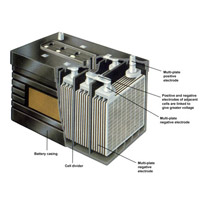With all the "intelligence" in cars it would be easy enough to program in a battery condition monitoring system.
Date is known (user input or from cell phone networks), location is known (onboard GPS), the temperature outside is known, the battery voltage is known, battery health and state of charge should be easy enough to extrapolate, after all a battery tester is basically a big load like, say, starting an engine.
The car should be able to figure out if it's summer (battery state of charge can drop a lot lower without battery damage or no-start) or winter (battery damage due to freezing more likely, no-start more likely) in its location. With a connection to cell phone networks, the car should even have access to local weather forecasts.
- If it's winter or cold weather is expected give the battery as much charge as possible.
- Set a low-battery charge state for summer and winter (obviously summer can drop lower than winter) and put a message on the dash suggesting they charge the battery or the vehicle might fail to start.
- Set a battery health warning letting the driver know the battery capacity is below a certain threshold and they should think about replacing it.
It's a lot less of an inconvenience knowing beforehand that the battery needs attention than finding out the hard way when you have somewhere important to be and your vehicle won't start, or worse, you're stranded somewhere unsafe.


